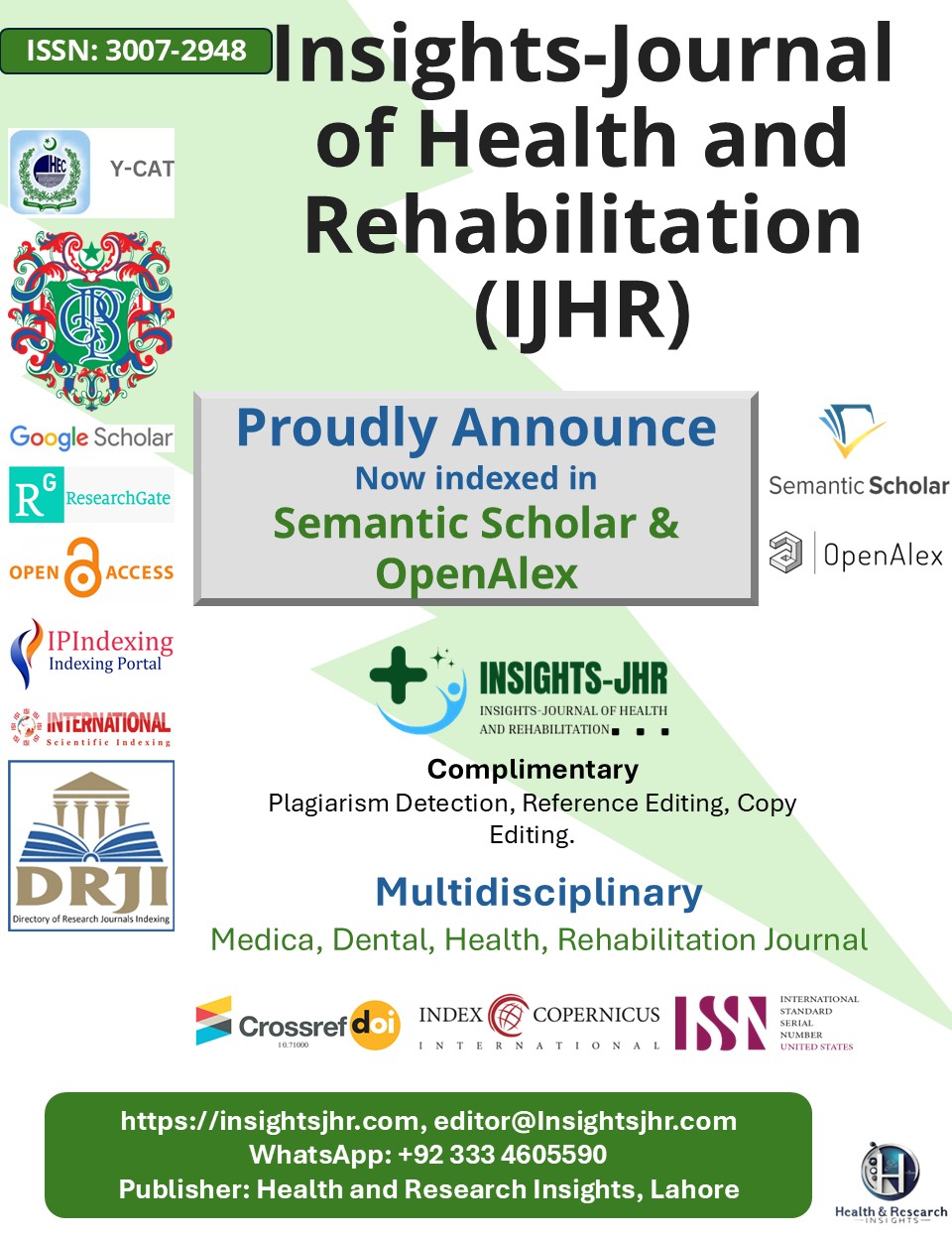RANDOMIZED CONTROL TRIAL OF OPIOID VERSUS OPIOID BASED ANALGESIA AFTER THYROIDECTOMY
DOI:
https://doi.org/10.71000/s5y9me07Keywords:
Analgesia, Opioid, Multimodal, Pain, Postoperative, Patient-Controlled Analgesia, Postoperative Nausea and Vomiting, Thyroidectomy; , Treatment Outcome, Visual Analog ScaleAbstract
Background: Postoperative pain management after thyroidectomy remains challenging due to the adverse effects associated with opioid-based regimens, including nausea, sedation, and dependency risks. Recent attention has shifted toward multimodal analgesia, which combines opioids with non-opioid agents to enhance pain control and minimize opioid-related complications. Although proven beneficial in other surgical fields, evidence regarding its application in thyroidectomy patients remains limited, necessitating focused clinical evaluation.
Objective: This study aimed to compare the efficacy and safety of opioid-only analgesia versus opioid-based multimodal analgesia for postoperative pain control in thyroidectomy patients, assessing pain relief, opioid consumption, adverse effects, recovery quality, and hospital stay duration.
Methods: A randomized controlled trial was conducted involving 120 adult patients scheduled for elective thyroidectomy. Participants were randomized equally into two groups: Group A received opioid-based multimodal analgesia (n=60) comprising morphine combined with acetaminophen, NSAIDs, and dexmedetomidine, whereas Group B received opioid-only analgesia (n=60) via morphine-based patient-controlled analgesia (PCA). Pain scores were measured at 1, 3, 6, 12, and 24 hours postoperatively using the Visual Analog Scale (VAS). Secondary outcomes included total morphine consumption, incidence of postoperative nausea and vomiting (PONV), sedation scores, quality of recovery (QoR-40), and hospital stay duration.
Results: Patients in the multimodal group reported significantly lower pain scores across all time points (p < 0.05). Total morphine usage was markedly reduced in the multimodal group (14.7 ± 4.2 mg) compared to the opioid-only group (25.2 ± 5.8 mg, p < 0.001). Rescue analgesia was needed by 18% in the multimodal group versus 45% in the opioid-only group (p = 0.002). Lower PONV rates (13% vs. 30%, p = 0.01) and sedation scores (8% vs. 20%, p = 0.03) were also noted. The multimodal group achieved higher QoR-40 scores (162.4 ± 10.8 vs. 145.2 ± 12.3, p < 0.001) and a shorter hospital stay (2.6 ± 0.7 days vs. 3.2 ± 0.8 days, p = 0.02).
Conclusion: Opioid-based multimodal analgesia significantly improved postoperative pain control, reduced opioid consumption, minimized adverse effects, and enhanced recovery quality compared to opioid monotherapy in thyroidectomy patients. The findings advocate for the routine implementation of multimodal strategies in thyroidectomy postoperative care, with future research needed to explore long-term outcomes and cost-effectiveness.
Downloads
Published
Issue
Section
License
Copyright (c) 2025 Umer Mushtaq , Muhammad Shoaib Khan, Kishmala Ijaz, Hamza Ali Malik, Ibtesam Raza, Muhammad Saqlain (Author)

This work is licensed under a Creative Commons Attribution-NonCommercial-NoDerivatives 4.0 International License.







